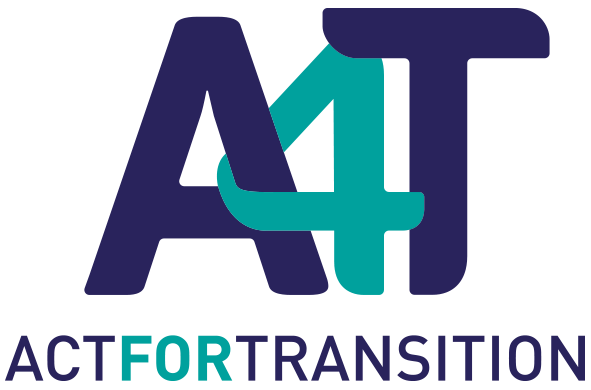Is the electric car the key to the decarbonization of transport? In other words, is it capable of leading to a drastic reduction in emissions caused during our travels? Compared to other low-carbon vehicles, such as those running on biomethane, does it have other strong points to put forward? What limits does it encounter today? Will the components used in batteries run out? What about charging stations? And autonomy, and long journeys?
Based on scientific data, this article aims to challenge certain preconceived ideas. Because, if the electric car performs better than its competitors, it is necessary for people to know this to guide their choice when renewing their vehicle.
Before continuing, let's pause for a moment on the expression “decarbonize the transport sector”. What do we mean by that?
According to the report of the High Council for the Climate (HCC) , the transport sector is the origin of 31% of greenhouse gas emissions on French territory, ahead of industry (19%), agriculture (19%), buildings (17%), energy (10%) and waste treatment (4%).
(See distribution details .)
Achieving carbon neutrality in 2050 therefore requires, in addition to actions to be taken in all other sectors, a particular effort regarding transport. This is why the government is setting a target of reducing emissions from the sector by 70% over the next thirty years.
However, in France, passenger cars and utility vehicles contribute 68% to the sector's emissions , compared to 25% for heavy goods vehicles, 4% for planes and 3% for the rest (maritime, two-wheelers, rail). , fluvial).
Responsible for more than two thirds of emissions, light vehicles are therefore the most powerful lever for decarbonizing transport. Despite an increase in sales of hybrid and electric vehicles in recent years, the thermal engine continues to be hegemonic, as the following tables indicate:
| Cars on the road in 2021 | Diesel/petrol thermal cars | Electric & hydrogen cars | Others (hybrids, gas) |
| 38 346 266 | 37 142 735 | 244 863 | 867 345 |
| 100 % | 97 % | 0,7 % | 2,3 % |
| Utilities in circulation in 2021 | Diesel/gasoline thermal utilities | Electric & Hydrogen Utilities | Others (hybrids, gas) |
| 5 904 396 | 5 831 622 | 48 659 | 24 115 |
| 100 % | 99 % | 0,7 % | 0,3 % |
Given these figures, the gradual replacement of thermal vehicles by less emitting vehicles seems to be the sine qua non for the decarbonization of the transport sector.
Due to the inertia of the automobile industry (models designed today will be sold in 2030 and still in circulation in 2050), choices must be made quickly to promote the development of vehicles most in line with carbon neutrality objective.
Therefore, several questions arise:
- What are the alternatives to the heat engine?
- What challenges does the adoption of electric cars raise?
- Besides reducing emissions, what are the co-benefits of electric cars?
- Conclusion
What are the alternatives to the heat engine?
Petrol, diesel, gas, hydrogen, biofuel, hybrid, 100% electric…
Alongside thermal cars running on diesel or gasoline, there are four categories of vehicles:
- battery electric;
- hydrogen fuel cell electric;
- plug-in and non-plug-in hybrid;
- thermal with natural gas and biofuel.
To compare the emission levels of these different types of vehicle, it is necessary to consider their carbon footprint over the entire life cycle , that is to say the totality of emissions induced from the extraction of raw materials until at the end of life (breakage or recycling), through the machining of parts, assembly, use of the car, its maintenance, the production of fossil fuel or electricity, etc.
Many electric vehicle manufacturers neglect upstream and downstream emissions in order to promote “zero-emission” cars, focusing on use and without even considering the carbon intensity* of the mix from which the electricity for charging comes. . Because if the electricity used to charge an electric car is produced by a coal-fired power plant, its use will be far from CO neutral.2…
* gCO2e emitted for 1 kWh put on the network
Carbon footprint: what type of vehicle emits the least?
The data presented in the following diagram comes from a report produced by the Carbone 4 firm on alternative engines. The carbon footprint of different types of vehicles is given in gCO2e/km and calculated on the basis of a distance traveled of 200,000 kilometers.
Below is the list of acronyms used:
| VTH | Thermal Vehicle |
| ORV | Plug-in Hybrid Vehicle |
| VEB | Battery Electric Vehicle |
| VEH | Hydrogen Vehicle (Fuel Cell) |
| CNG | Compressed Natural Gas |
| MHEV | Thermal vehicle with mild hybridization |
By considering the carbon footprint of different types of vehicle, it is already possible to state that:
- Thermal vehicles running on natural gas do not constitute a low-carbon alternative. Even if they emit less than diesel vehicles, the gain is only 23%.
- Neither do plug-in hybrid vehicles, because of their consumption of fossil fuel, effective more than 60% of the time of use. The reduction compared to diesel thermal vehicles is only 16%.
- In the absence of a decarbonized electricity mix to produce green hydrogen, hydrogen vehicles, at least with regard to light mobility, constitute a false good idea. In Europe, they emit on average more than thermal diesel vehicles (+ 15%).
3 technologies stand out in France:
- Battery electric vehicles ( 80 gCO2e/km in France, 112 in Europe) allow on average a reduction of 70% in France and 59% in Europe compared to a diesel vehicle, over the entire life cycle.
- Hydrogen vehicles in France (112 gCO2e/km) in France emit on average 59% less than diesel vehicles.
- BioCNG vehicles have the same carbon footprint as battery vehicles in France (80 gCO2e/km). They therefore emit 70% less than diesel vehicles.
Beyond the carbon footprint, other parameters must be considered.
First, green hydrogen is expensive, from €5 to €10 per kilo (around 100 kilometers).
Then, as an energy vector, hydrogen has a poor yield (0.4 if it is produced by electrolysis. This amounts to saying that we use for example 10 kWh in order to obtain 4 which we compress and which stored for later use).
Concerning emissions, it is only competitive in countries whose mix is largely decarbonized, which explains the difference of 200 gCO2e per kilometer between France and the European average... At 312 gCO2/km, you might as well drive a car thermal.
In addition, the hydrogen allocated to the fleet of light vehicles competes with other uses, which we observe in the metallurgical industry for example. Not being in unlimited quantity, its allocation is subject to arbitration.
Ultimately, it does not constitute a viable solution on a large scale, especially since the adoption of hydrogen mobility would require the massive installation of specific service stations across the entire territory, at a very fast pace. higher than what we have observed in recent years. For information, there are currently only 29 stations in service in France in this niche.
BioCNG, or biomethane, comes from organic waste. On paper, it's a good alternative to fossil fuels. Unfortunately, the question of resource allocation arises here again, given that the agricultural land necessary for its production is also in limited quantity. Between food and fuel, you have to choose. Biomethane could possibly be an interesting solution for heavy mobility but will never be sufficient to supply the entire vehicle fleet.
The battery electric car therefore appears to be the only alternative to the thermal car that can be adopted on a large scale. In addition, it makes it possible to reduce emissions from the transport sector in the light vehicle segment by 70%, which makes it possible to achieve the objective set by France for 2050.
What challenges does the electric car raise?
Raw materials
Contrary to popular belief, there are no rare earths in the majority of batteries and electric motors. On the other hand, batteries contain highly critical metals, such as lithium and cobalt, the supply of which could become problematic by 2030, especially since the supply is often very localized (lithium in Latin America , cobalt in the Democratic Republic of Congo…). Undeniably, there is a factor of geopolitical tension there.
With the increase in demand, other currently abundant metals such as nickel, graphite or copper could also end up seeing their prices increase or experiencing supply problems.
The recovery of metals from which batteries are made, via recycling, is therefore a major challenge for the diffusion of electric vehicles. If Li-ion batteries are currently 50% recyclable, new hydrometallurgical and mechanical processes suggest a recycling rate of 80 to 90% in the medium term. The sector will have to develop as these electric vehicles leave the fleet and as pressure on raw materials increases.
With its Green Deal , the European Commission is seeking to accelerate the emergence of this sector by regulating the content of recycled materials in batteries sold in the EU. From 2030, they must contain at least 12% cobalt, 85% lead, 4% lithium and 4% recycled nickel, and these proportions will increase to 20% cobalt, 10% lithium and 12% nickel. recycled from 2035.
Vehicle weight and battery power
With SUVs flooding the market, the current trend is towards larger and heavier vehicles.
According to Ademe, in 30 years, the mass of cars has increased by 30% on a weighted average in France and by 60% for the compact sedan range.
However, if technological progress has allowed the engine to consume less and less, the increase in the mass of vehicles cancels out these gains. Indeed, even electric, a heavy vehicle needs a more powerful battery , the manufacture of which requires more raw materials and induces more emissions upstream, not to mention the additional energy necessary to make it run at the same speed. speed than a lighter vehicle.
Because of this, a Tesla emits around 25% more CO2 than a compact electric city car over its entire life cycle.
For the battery electric car to achieve the decarbonization objectives of the transport sector ( ⇒ – 70% in 2050), it is essential to:
- limit the weight of the machines,
- limit the power of batteries (or at least, no longer try to offer ever more powerful ones)
Autonomy, battery and charging stations
Even if 95% of car trips do not exceed 300 kilometers, the question of the range of electric vehicles remains an obstacle for most motorists.
Recharging your battery when you're on the move involves finding a charging station , and therefore planning your route in advance. There are currently 60,000 charging stations in the region, which is still too low to meet demand, especially during traffic peaks. The government is ambitious, since it is counting on 7 million terminals installed by 2050, although the public/private distribution has not yet been determined.
The second obstacle relates to the duration of loading . With an electric car, you have to be prepared to spend a little more time on the road (around 1 to 2 hours more for a journey of between 300 and 500 km). Apart from the fact that breaks are anyway recommended during long journeys, it is useful to point out that fast terminals are emerging and spreading, which in less than half an hour can recharge up to 80%. of his vehicle's battery.
On the other hand, contrary to popular belief, the battery of an electric car does not need to be replaced during the vehicle's use phase. An average battery is designed to withstand 1,000 to 1,500 cycles* before losing 10 to 20% of its original capacity. For 15,000 kilometers per year, this represents a use of 15 to 20 years. Something to see coming…
*A charge cycle corresponds to using the entire battery. As we recharge before the battery is completely empty, the number of charges is greater than the number of cycles.
Acquisition price VS total cost of ownership (TCO)
A battery electric vehicle costs more to purchase than a thermal vehicle, at least at an equivalent level of range. However, the cost of a vehicle is not limited to its purchase price, you also have to consider fuel, maintenance, insurance, parking, tolls, etc.
However, when it comes to fuel, the electric vehicle is much less expensive than a thermal vehicle, particularly if it is recharged at home. And as for maintenance too! Technical visits are less frequent, every 30,000 km for an electric vehicle compared to 15 to 20,000 for a thermal car. If we integrate other aspects relating to the engine, the clutch (there are none!) or braking, we arrive at a reduction of 20 to 40% in maintenance costs. So much so that in certain conditions, with significant daily distances for example, certain electric vehicles already have a lower total cost of ownership (TCO) than the equivalent thermal vehicle .
To this, we must add two things. The first is that all manufacturers, having understood that the acquisition price would be a barrier for many people, offer to spread it out in monthly rents, thus making it possible to smooth out the additional cost over several years. The second concerns the ecological bonus put in place by the government to accelerate the transition of the fleet to electric. It is likely that other subsidies will be released in the years to come.
Besides reducing emissions, what are the co-benefits of electric cars?
Air quality
If public debate gives pride of place to the climate impact of different vehicles, that is to say their carbon footprint, the question of air quality is more rarely introduced. The total absence of exhaust pollutant emissions (nitrogen oxides “NOx” and fine particles) is, however, a strong argument in favor of the electric car.
Indeed, outdoor air pollution constitutes a major public health issue, since it causes 40,000 premature deaths per year (i.e. 9% of mortality in France) and causes a loss of life expectancy at age 30. which may exceed 2 years.
Of course, fine particles linked to tire wear and braking must also be taken into account. In this respect, the two types of vehicle are equivalent: more fine particles coming from the tires of electric cars, often wider due to greater weight, but fewer during braking thanks to the energy recovery devices integrated into the electric vehicles.
Electric cars are therefore a much better option when it comes to air quality.
Noise pollution
In the city, the noise of car engines is the main noise nuisance. However, it is now proven that this “pollution” has an impact on health: stress level, quality of sleep, irritability, etc. According to a 2014 IFOP study , 82% of French people say they are concerned about noise pollution, and a study carried out by EY for Ademe estimated the cost of transport noise at 20.6 billion euros per year.
Here again, the electric car stands out, given that electric motors are very quiet compared to internal combustion engines.
Please note: From now on, to avoid accidents in urban areas, electric or hybrid cars must emit a sound of at least 56 decibels when traveling at less than 20 km/h, the equivalent of the noise of a dishwasher, from a desktop computer or the atmosphere in a peaceful restaurant…
Conclusion
With a carbon footprint reduced by 70% compared to a diesel car, the electric car is, at least on paper, the key to decarbonization of the transport sector.
In fact, it is the only type of vehicle compatible with:
- The 70% reduction target set by the government for 2050;
- Optimal allocation of resources.
The co-benefits linked to air quality and noise pollution also argue for the adoption of electric cars.
However, so that the rebound effect does not limit the reductions observed, efforts must be made on several fronts. This will include:
- Limit the weight of vehicles and the power of batteries,
- Massify the installation of charging stations,
- Increase public subsidies to compensate for the additional cost of purchasing with a view to accelerating the adoption of electric vehicles by the French,
- Recycle batteries that have reached the end of their life to manufacture the next ones.
As for batteries, even if the materials used mostly come from abroad, megafactories are emerging in Europe with cutting-edge players like ACC . The development of these production units is essential for the European Union. They will make it possible to create qualified jobs, develop cutting-edge technologies and limit our dependence on other great powers.
In any case, because of the rebound effects observed (better efficiency compensated by heavier cars), the electric car cannot be considered a panacea.
Other levers must be activated in parallel, such as sobriety, which consists of reducing the number or distance of trips, and modal shift, aiming to favor other means of transport (bicycle, public transport, train, etc.) when possible.
How can you actually decarbonize your company's vehicle fleet?
If you are now wondering what you can actually do to decarbonize your company's fleet, here are 4 solutions to consider:
- Prefer electric when renewing vehicles;
- Install electrical terminals in the company's parking areas;
- Provide employees with soft mobility vehicles (electric bikes and cars, free public transport packages, etc.);
- Choose smaller vehicles, preferring city cars to SUVs.
Do you have a question? Would you like to speak with an act4transition about your company's vehicle fleet or any other subject relating to the decarbonization of your activity? Ask us, we are here to listen to you.





